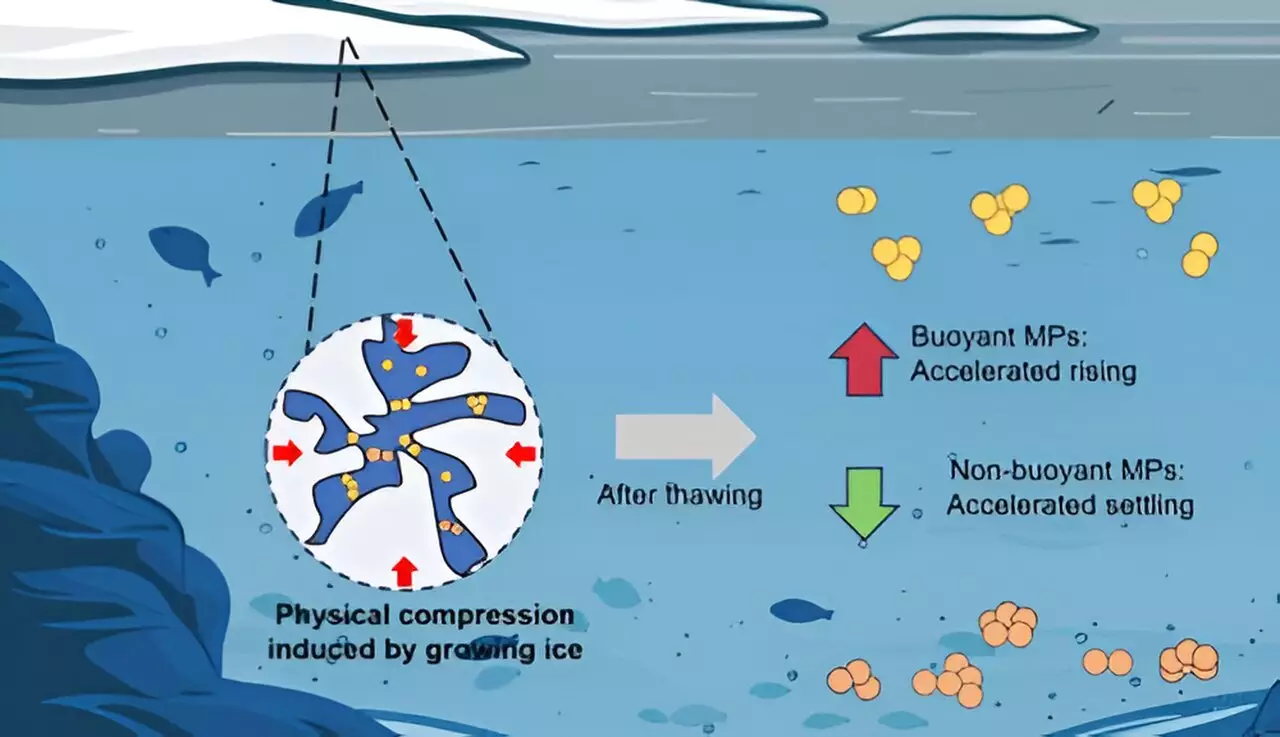The growing concern over microplastic pollution has captured the attention of scientists and environmentalists alike. With an estimated 5.25 trillion pieces of plastic debris floating in the world’s oceans, understanding the behavior and fate of microplastics in different environmental conditions is crucial. Recent findings published in *Environmental Science & Technology* shed light on how freezing temperatures alter the properties and movements of these tiny plastic particles. This article explores the implications of freezing on microplastics, highlighting its potential impact on freshwater and marine ecosystems.
Microplastics, typically defined as plastic particles smaller than 5 millimeters, come from a variety of sources, including the breakdown of larger plastic waste and the shedding of synthetic fibers from clothing. In colder regions, these particles often accumulate on the surface of water bodies as ice forms. However, with the thawing of ice, changes in the properties of these particles occur, affecting their interactions with the aquatic environment. Interestingly, the behavior of microplastics varies significantly based on their composition, which includes polymers like polyethylene (PE), polyurethane (PU), and polytetrafluoroethylene (PTFE).
In a laboratory study led by Chunjiang An, researchers examined the impact of freezing on these three different polymers in both freshwater and saltwater environments. Their experiments involved freezing microplastic particles sized between 6 and 10 micrometers for 24 hours before thawing them completely. The results showed that in freshwater, all three polymers exhibited an increase in particle size after being subjected to freezing conditions. Notably, PE, which possesses hydrophobic properties, demonstrated a significant size increase of 46%, while PU – which has an affinity for water molecules – showed a more modest rise of 9%.
Contrastingly, as salinity levels increased, the influences of freezing on particle size diminished. This observation led researchers to hypothesize that brine channels, created during the freezing process, allow microplastics to navigate through the ice without forming larger aggregates, thus maintaining their original sizes.
One of the critical aspects of the study was examining how changes in microplastic size post-freezing impacted their buoyancy and sedimentation tendencies. By analyzing the balance of gravitational, buoyant, and drag forces acting on the particles, researchers found that frozen PE particles were likely to rise quicker upon thawing, while denser materials like PU and PTFE tended to sink more rapidly. This phenomenon indicates that freezing and thawing cycles could potentially accelerate sediment accumulation in aquatic ecosystems, leading to greater environmental implications.
The findings of this research highlight significant concerns regarding microplastic pollution in cold climates, where ice formation and melting cycles occur. Alterations in microplastic behavior due to thermal conditions can influence not just the distribution of these pollutants but also their ecological impacts on aquatic life. As microplastics settle in sediments, they can become bioavailable, posing risks to organisms that ingest them. This can lead to toxicological repercussions, as well as a disruption of food webs.
The study’s authors acknowledge the limitations of their investigation, particularly the relatively short freezing periods compared to natural environments where ice formation can persist for several months. This indicates a need for further research to mimic more accurate environmental conditions and to better understand the long-term impacts of microplastics on aquatic ecosystems.
As the fight against plastic pollution continues, understanding the multifaceted behaviors of microplastics in various environmental phenomena, including freezing and thawing, becomes ever more critical. The recent findings illustrate that freezing is not just a temporary state for microplastics, but a transformative process that can alter their fate within ecosystems. These insights underscore the urgent need for innovative solutions and comprehensive studies to mitigate the pervasive threat of microplastics and protect our vital aquatic resources.


Leave a Reply